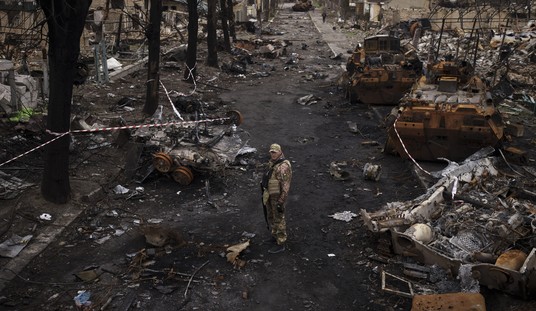This morning’s Gospel reading is Luke 3:15–16, 21–22:
The people were filled with expectation, and all were asking in their hearts whether John might be the Christ. John answered them all, saying, “I am baptizing you with water, but one mightier than I is coming. I am not worthy to loosen the thongs of his sandals. He will baptize you with the Holy Spirit and fire.”
After all the people had been baptized and Jesus also had been baptized and was praying, heaven was opened and the Holy Spirit descended upon him in bodily form like a dove. And a voice came from heaven, “You are my beloved Son; with you I am well pleased.”
Several years ago, my wife and I traveled through the Holy Land on a pilgrimage with our then-pastor and a number of our friends in the parish. If readers have not had an opportunity to make such a pilgrimage, I cannot recommend it enough, as long as you have the kind of expert guidance that we did. Reading the scriptures and Gospel are certainly sufficient to faith, but understanding the geographic and physical context enriches these readings enormously.
In our travels, we went to the Jordan River where John the Baptist preached and baptized Jesus, to Mount Nebo overlooking that valley, one of the lowest on Earth. We went to Jerusalem, situated on a mountain, and traveled through the valleys surrounding it. Mount Tabor, the site of the Transfiguration, overlooks the Jezreel Valley and lower Galilee. Even close to Jerusalem, the walk up and down the Mount of Olives makes an impression, both on our understanding of Jesus’ entry into Jerusalem as well as on our feet and backs. (It’s very steep!)
In other words, the Holy Land in scriptural and Gospel times was a land of mountains and valleys. The landscape would have been an intimate part of the lives of its inhabitants, not just economically but culturally and spiritually as well. The valleys would have been where most people lived in towns and cities, while the mountains would have been used for security, seclusion, and spiritual retreat. The higher one went, the closer one comes to the Lord, a thread that runs in scripture from Mount Sinai to Mount Tabor, and is clearly present in Jerusalem’s identity as the city of God.
Thus Isaiah’s prophecy in our first reading speaks to a yearning more than geography:
A voice cries out: In the desert prepare the way of the LORD! Make straight in the wasteland a highway for our God! Every valley shall be filled in, every mountain and hill shall be made low; the rugged land shall be made a plain, the rough country, a broad valley. Then the glory of the LORD shall be revealed, and all people shall see it together; for the mouth of the LORD has spoken.
What is this yearning, and what is the “way”? The yearning is for us to live in God’s presence, not separated from it by our own concupiscence. We want the valley to meet the mountain in the sense that we want to enter into the Lord’s embrace. The Lord promises to lift the valleys and lower the mountains by reconsecrating us as His children and condescending to come down to us at the same time.
We see this in an instance of theophany at Jesus’ baptism, when the entire Trinity presents itself at once. As John baptizes Jesus, the Lord appears in voice and imagery, while the Holy Spirit descends to Jesus in a “bodily form like a dove.” This takes place in one of the lowest valleys in the world, several hundred feet below sea level in the Jordan Valley, a symbolic gesture that cannot be overlooked. It tells us that the Lord’s promise to lift all of the valleys is profound and reliable for all His children. In the words of the popular Motown song, there ain’t no valley low enough to keep Him from us.
Jesus Himself is another and more clearly recognized form of this condescension on the Lord’s part for our salvation, of course. Jesus also came to the “lowest” point among the Judeans, a poor family in a poverty-stricken community. He did not come into a family that was part of the temple elite. However, John the Baptist did, as the son of Zechariah, a temple priest. This was a hereditary calling that John certainly could have and probably was expected to pursue, a calling that would have made him part of the leadership. One could even say that John would have been on top of the mountain in terms of status and prestige in those days, not to mention physically on the mountains of Jerusalem itself.
Instead, John followed his call to be a prophet, descending from his hereditary function and Jerusalem to almost literally the lowest possible place in the region. He left a life of relative privilege and comfort to follow the Lord into one of the most inhospitable regions in the world and exist on bare-subsistence levels of food and water. What was John’s calling? To lift people up by removing their sins in baptism. In John, the mountain comes down to the valley, especially in the moment of Jesus’ baptism in which the valley and the mountain meet completely.
Recall too what happens in that moment. People had expected John to be the Messiah or at least a religious leader in his own right. Instead, John — the son of the priest — humbles himself before Jesus, the son of a carpenter, and declares that he is not worthy. Jesus lifts John up and gives him authority to baptize Jesus.
All of this preconfigures the role of the Church Jesus establishes. In the days of the temple, the path of salvation was stratified; one had to ascend to the temple to sacrifice and atone for sins, hoping to seek salvation. Similarly, the Lord had given the Israelites the mission to become a nation of priests and prophets that would call the nations to Jerusalem to learn His Word and the Law. Jesus reverses that by creating a Church that will bring the Word to the nations in the Great Commission. Jesus also removes the stratification by transforming the priesthood of the new salvation model by calling men who have no hereditary or ecclesial connection to it — fishermen, tax collectors, and so on.
This too is another way in which the valley meets the mountain in the spiritual life. No longer would God’s children need to sacrifice, and therefore operate within a worldly power structure, for atonement for sins. Jesus provided the sacrifice for all, and in doing so demolished the “mountain” for all time. The Great Commission raised the “valley” by bringing us all into a personal relationship with Christ through the Holy Spirit.
So what is the “way” to be prepared? Remember in the early days, Christ’s adherents called it The Way, perhaps mindful of Isaiah’s prophecy. Christianity is the path that opens to all after Jesus brings the mountain and valley to the same level and offers us all a path to the Trinitarian life through His sacrifice. He brings the “way” to each of us, but we must complete that path within ourselves and prepare a place for the Holy Spirit in our hearts. Only then will we live in the world where mountain and valley are made as one — as we become one with the Lord through Jesus’ salvation.
The front-page image is a detail from “Saint John the Baptist Bearing Witness” by Francesco Granacci, c. 1506-7. On display at the Metropolitan Museum of Art. Via Wikimedia Commons.
“Sunday Reflection” is a regular feature, looking at the specific readings used in today’s Mass in Catholic parishes around the world. The reflection represents only my own point of view, intended to help prepare myself for the Lord’s day and perhaps spark a meaningful discussion. Previous Sunday Reflections from the main page can be found here.








Join the conversation as a VIP Member